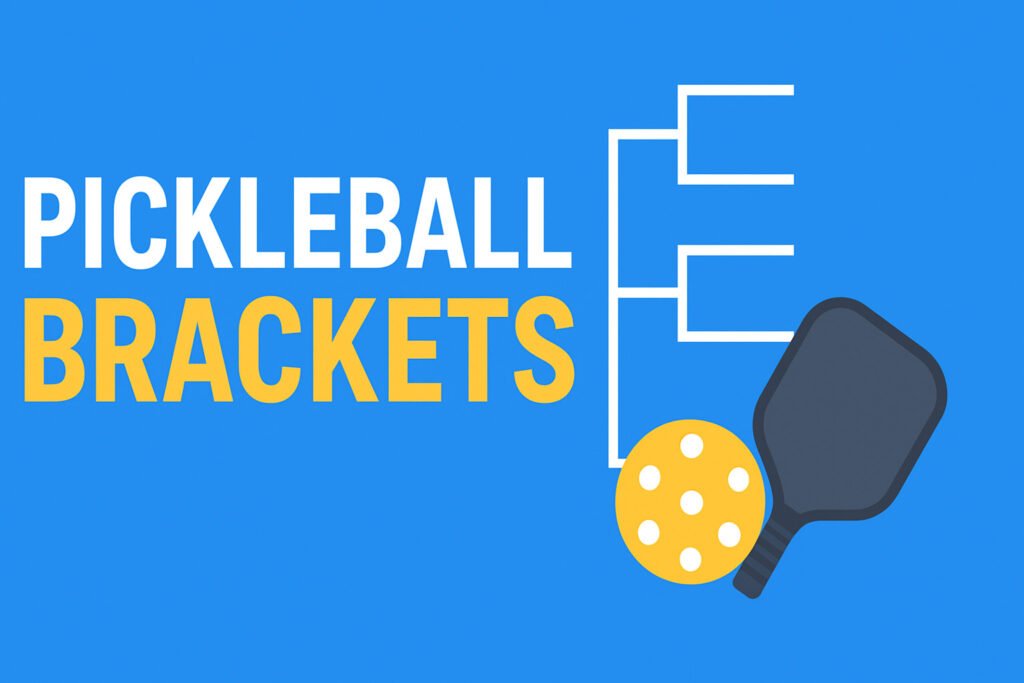Pickleball Brackets: Complete Guide (Types, Rules, Formats & How to Create a Winning Tournament Bracket)
Pickleball has quickly become one of the fastest-growing sports worldwide, and with its growth, pickleball tournaments are happening everywhere—from local clubs to national championships. At the heart of every tournament lies a crucial element: the pickleball bracket system. Whether you’re a player gearing up for competition or an organizer planning an event, understanding pickleball brackets is essential for fair play, smooth scheduling, and exciting matchups.In this complete guide, we explain what pickleball brackets are, types of brackets, how seeding works, point systems, and how to create pickleball tournament brackets like a pro. What Are Pickleball Brackets? A pickleball bracket is a structured tournament layout that determines who plays whom, how players advance, and how final rankings are decided. Brackets prevent bias and ensure an organized path from the first match to finals. Brackets are used for: Key Benefits of Using Pickleball Brackets Benefits Why It Matters Fair competition No favoritism—advancement depends purely on performance Smooth scheduling Easy to manage multiple matches and court time Competitive excitement Every stage builds toward semifinals and finals Player motivation Clear goals and ranking system keep players engaged Accurate ranking Determines exact standings for all players/teams Common Types of Pickleball Tournament Brackets Pickleball tournaments can feature various types of brackets, depending on the format, number of participants, and competitive level. Here are the most common types of pickleball tournament brackets: 1. Single Elimination 2. Double Elimination 3. Round Robin 4. Pool Play with Playoffs 5. Compass Draw 6. Ladder Bracket 7. Team-Based Brackets 8. King/Queen of the Court Each format has its own advantages and is suited to different types of tournaments, from casual local events to high-stakes championships. Organizers often choose based on the number of participants, time constraints, and the level of competition. How Pickleball Seeding Works Seeding in pickleball tournaments is the process of ranking players or teams before the tournament begins to ensure a fair and balanced competition. The goal is to prevent the strongest players or teams from facing each other in the early rounds, allowing for a more competitive and exciting progression through the tournament. Here’s how pickleball seeding typically works: 1. Determining Seeds Seeding is based on various factors, depending on the tournament’s level and the availability of player data. Common methods include: 2. Seeding Process Once the seeds are determined, they are used to structure the tournament bracket. Here’s how it works: 3. Adjustments for Double Elimination In double-elimination tournaments, seeding affects both the winner’s and loser’s brackets. The initial matchups are based on seeds, but as players move to the loser’s bracket, matchups are determined by performance rather than seeding. 4. Challenges in Seeding Seeding isn’t always perfect, and challenges can arise, such as: 5. Benefits of Seeding Pickleball Bracket Scoring & Match Formats Tournament directors may use different formats, such as: Format Description Best of 3 Games Most common; race to 11 or 15 points Single Game to 15 or 21 For shorter schedules Rally Scoring Every rally counts as a point (faster games) Traditional Scoring Only the serving team scores Scoring choice depends on time availability, number of players, and skill category. How to Create a Pickleball Tournament Bracket Creating a pickleball tournament bracket involves careful planning and organization to ensure a smooth and enjoyable event for all participants. Here’s a step-by-step guide to help you create a pickleball tournament bracket: 1. Determine the Tournament Format The first step is to decide on the type of bracket that best suits your tournament. Common formats include: Choose a format based on the number of participants, available time, and the level of competition. 2. Collect Player/Team Information Gather the following details from participants: If you’re organizing a doubles tournament, ensure you have the names of both players on each team. 3. Seed the Players/Teams Seeding helps ensure fair matchups and a balanced bracket. Use one or more of the following methods to rank players/teams: 4. Choose a Bracket Template You can create your bracket manually or use online tools. Here are some options: 5. Set Up the Bracket Follow these steps to structure the bracket: 6. Communicate the Bracket Share the bracket with participants before the tournament begins. If you’re using a digital tool, provide a link to the bracket. For manual brackets, display them prominently at the venue. 7. Track Results As matches are played, update the bracket with winners and scores. For double-elimination or compass draw formats, ensure players/teams are placed in the correct brackets after each round. 8. Determine the Winner The winner(s) will be the last player/team standing in single or double-elimination formats, or the one with the best record in round-robin play. For pool play with playoffs, the playoff bracket determines the champion. 9. Celebrate and Share Results Announce the winners, distribute prizes (if applicable), and share the results with participants. You can also post updates on social media or your tournament website. Tips for Success By following these steps, you can create a well-organized pickleball tournament bracket that ensures a fun and competitive experience for all participants! Tips to Run a Successful Pickleball Bracket Tournament Running a successful pickleball bracket tournament requires careful planning, organization, and attention to detail. Here are some practical tips to ensure your event runs smoothly and is enjoyable for all participants: 1. Plan Ahead 2. Promote the Tournament 3. Organize Player Information 4. Prepare the Venue 5. Communicate Clearly 6. Stay Organized During the Event 7. Ensure Fair Play 8. Create a Fun Atmosphere 9. Celebrate the Winners 10. Gather Feedback Bonus Tips Pickleball Brackets for Club & Event Growth Organized brackets help: A well-structured bracket transforms a casual event into a professional-level pickleball tournament experience. Conclusion Pickleball brackets are the backbone of competitive play — from small community tournaments to national events. Whether you’re a beginner, a club organizer, or a competitive athlete, mastering bracket formats ensures fair ranking, exciting gameplay, and smooth event management.




